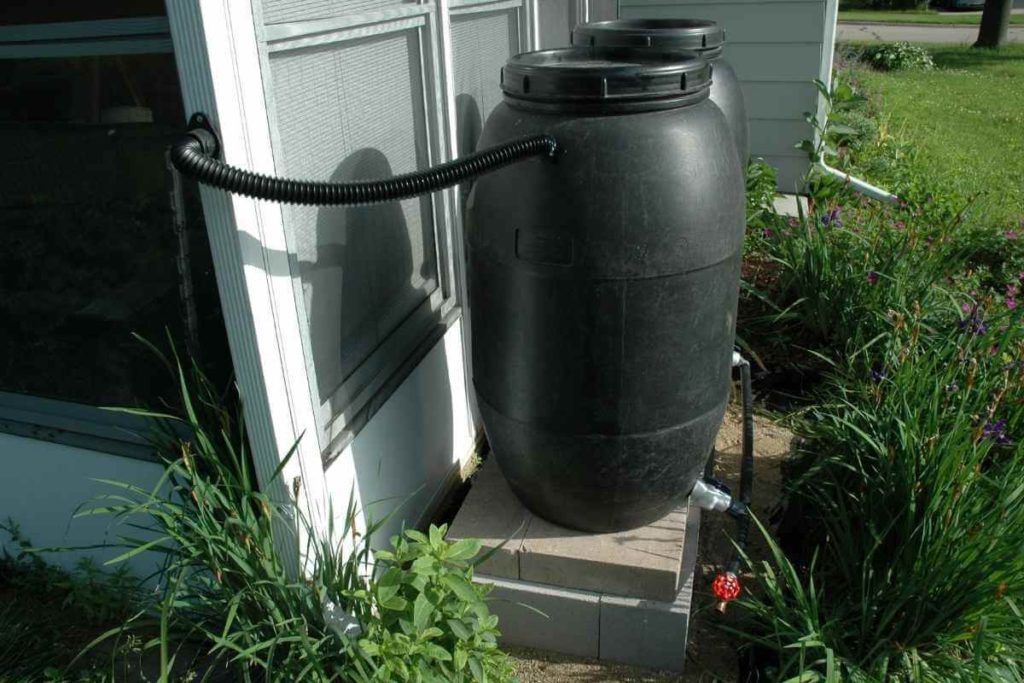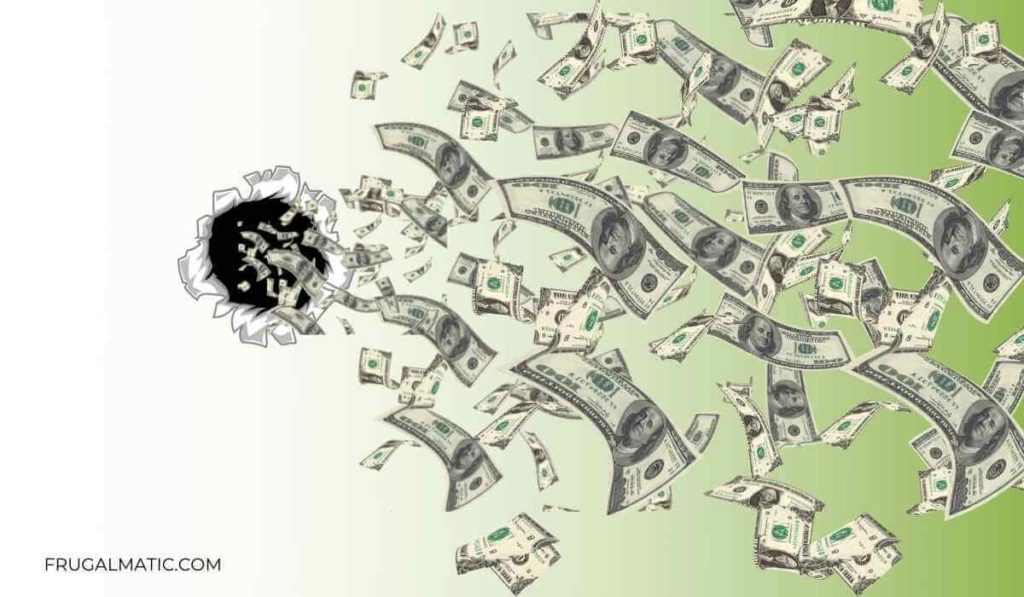This post was last updated on August 11th, 2022 at 11:04 am
You’ve probably read about the benefits of passive income. Passive income is about having your money work for you rather than you working for money. Some examples include dividends from stocks and interest payments from bonds. It’s smart to have multiple income streams, rather than rely on wages alone. But have you thought about saving money in a similar way? It’s a principle we might call passive saving.
Passive saving is the mirror image of passive income. Just like passive income, passive saving requires an initial investment. But instead of generating steady income, this investment produces steady savings. It reduces expenses and/or consumption with minimal ongoing effort on your part.
Money saved is money not taxed
One of the underappreciated aspects of not having to spend money is that, unlike income, savings are not taxed. When you earn money at a job, a big chunk of it goes to the tax man. For example, if you earn $60,000 a year, you’ll pay about $9,000 in federal income taxes (before factoring any tax deductions or credits) and $4,600 in Social Security and Medicare taxes. This scenario doesn’t include any state or local income taxes, which would further reduce your take-home pay. (Full disclosure: I’m not an accountant, and these are rough estimates.)
Plus, you have other expenses related to a job, such as fuel costs for commuting. There also may be costs for maintaining a certain style of dress and appearance.
(Finally, when you spend all that hard-earned money, you often have to pay sales tax.)
My point is this: You don’t receive the full benefit of the money you earn. However, you do garner the full benefit of the money you don’t spend. In this way, passive saving can be a powerful tool for improving the household balance sheet.
Read: How to fight inflation—the morning routine
So why aren’t more people talking about passive saving?
You won’t find much discussion about passive saving on the internet, at least compared to passive income. For one thing, Wall Street makes money through fees and commissions when you invest. There’s a lot of advertising for passive income schemes because they’re lucrative, sometimes for the investor but always for Wall Street.
Another reason there’s so little discussion, I believe, is that passive saving can be difficult to identify and define. Some forms of passive saving require an initial investment of money and labor, such as installing a low-flow shower head. That’s a simple concept, but other forms of passive saving require mainly a mental investment, such as self-discipline. That’s trickier.
In the 10 passive saving ideas I’ve listed below, you’ll find both types—ones that require either a mental or physical investment.
01 Break a bad habit
I write this as I sip on my daily cup of coffee, which I must have and not planning to stop anytime soon! To be sure, I’m no expert on breaking addictions or bad habits to save money, but breaking them is a form of passive saving. Of course, it is often easier said than done. It also can require ongoing maintenance, such as a recovering alcoholic needing to attend regular AA meetings. Certain addictions are more difficult to overcome than others. But once you get through the “withdrawal” phase, your odds of success increase. Many former smokers, for instance, have little urge to continue smoking after the first 30 days or so of quitting. If you’re spending hundreds of dollars each year on cigarettes or e-cigarettes, that represents a great passive saving opportunity.
When it comes to breaking bad habits, the benefits often extend beyond the financial. They also include improvements to your physical and mental health, which can then lead to additional financial savings.
If you’re interested in learning more about the U.S. culture of addiction, check out Dr. Anne Lembke’s book, “Dopamine nation: Finding balance in the age of indulgence.”
02 Remove food delivery apps from your phone
There’s no guarantee you won’t spend money on food delivery by removing your delivery apps, but at least you’ll make it a little more difficult. With this idea, you’re trying to make spending money less convenient. Hopefully, the added inconvenience will give you pause. That pause will be your opportunity to reconsider your options and opt for eating healthier, less expensive home-cooked meals.

03 Pay at the annual rate when possible
Whether you’re buying life insurance or a newspaper subscription, you often can save money by paying your bill annually versus monthly. Opting to pay annually can result in hundreds of dollars in savings depending on the product. Once you lock in savings with annual payments, no more effort is required. It becomes a form of passive savings as you avoid the higher cost of paying at the monthly rate, which might be less in the short run but likely more expensive in the long run. Of course, if you only need to use a certain service for a month or two, then paying the monthly rate makes more sense.
04 Live near employers, school, and stores
Admittedly, this is a difficult one to control. But if you can somehow manage to live near at least one place that you regularly frequent, it’s an easy way to cut down on transportation costs. At the same time, living within biking or walking distance will create more exercise opportunities for you.
If you’re not in a position to relocate, another option is to consider new employment or shopping opportunities closer to your home. Those great deals you’re getting at a store across town might be less attractive once you add the cost of transportation and the time it takes to travel there. Never underestimate the power of proximity. Keep the proximity of stores, employers, schools, etc. at the forefront of your calculations whenever you consider home relocation.
05 Shop at the right store
If you need a new flash drive or another piece of computer hardware, you might find it at a drug store but probably not at the best price. That’s because drug stores typically don’t carry large inventories of these items. It’s an obvious example, but my point is certain stores offer the best prices on certain products. By simply putting yourself in the best-priced store, you’ll be able to reduce your expenses without having to clip coupons to reduce costs. After all, if you save $1 with a coupon for a $5 item at Store A, you’re still worse off than if you bought that same or similar item for $3 at Store B with no coupon. These little price differences add up over time.
06 Work from home if possible
This idea boomed during the pandemic, but it’s always been a good one in terms of eliminating the time and fuel expense of the work commute. If you don’t live near where you work, the next best thing would be to work from home. And if you can’t work from home all the time, perhaps your employer would allow you to work from home one or two days a week. If not, it’s something to keep in mind during negotiations for your next job.
07 Upgrade your insulation
Whether adding insulation to your home is worthwhile largely depends on the payback period, defined as the length of time it takes to recoup your initial investment through your energy savings. For instance, if you have single-pane windows, upgrading to the double-pane variety will likely result in a quick payback. However, if you already have double-pane windows, upgrading to better quality double-pane windows will probably require a longer payback period. It’s a good idea to calculate your payback period before investing in new insulation.
08 Install a low-flow shower head
Your potential savings will depend on how many people take showers in your household, how often, and for how long. As with insulation, the payback period can vary. For example, if you’re using a standard 2.5 gallon per minute (gpm) shower head, you would cut your water use by 20% switching to 2 gpm head and 40% for a 1.5 gpm shower head.
How much money you stand to save also depends on the rates charged by your municipal water utility. If you live in the drought-stricken Western U.S., a low-flow shower head might have a quicker payback period and larger passive savings potential.
09 Set up a rain barrel to water the garden
Similar to the low-flow shower head, the idea here is to reduce your water utility bill. However, rain barrels can involve longer payback periods. Even if you’re able to save more than 1,000 gallons of water a year, that might only represent a $5 to $10 in savings on your water bill.
My family waited on buying rain barrels until this year when we were able to find some used barrels for a fraction of the price of new ones. This greatly reduced our payback period. I like the idea of using rain barrels because you’re not paying for services that you don’t need. When we use our municipal water, we’re charged twice—once at $2.87 per CCF (or 748 gallons) for “water flow” and again at $2.12 per CCF for “waste water flow.” But when watering a garden, you don’t use the municipal waste water infrastructure. At the same time, a garden doesn’t require chlorinated, potable water. Untreated rain barrel water is better suited.

10 Install a TV antenna
Free TV is great because, well, it’s free. It offers fewer choices, but that can actually be a good thing. With fewer channel options, you have fewer reasons to want to watch TV. For me, I’m less tempted to spend an afternoon on the couch watching sports because I don’t receive any sport channels. Cutting the cable or satellite dish cord can result in not only saving money—it can help you reduce your screen time.
Passive saving can fuel passive income
Generating passive savings can free up money that you can then put toward generating more passive income or paying off debt. When you’re able to save more money, it can contribute to a virtuous cycle, in which more saving leads to more passive income which then leads to even more income.
Consider the above list of ideas a starting point. It’s by no means exhaustive. Also, please feel free to post some of your passive saving ideas in the comments below!

